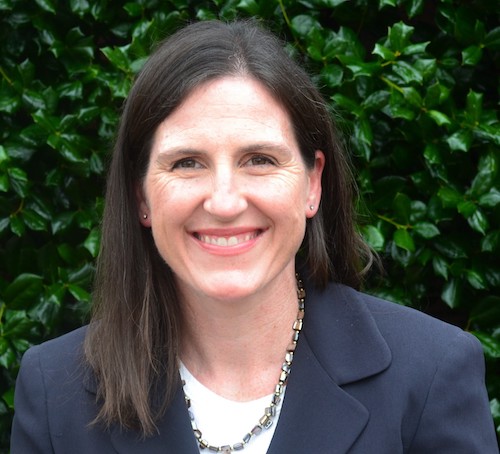While many jurisdictions had few or no online bar exam testing violations, California had many

Image from Shutterstock.com.
Following the administration of the first online remotely proctored bar exam in October, California appears to have sent out significantly more notices of potential testing violations than other large jurisdictions.
The state had 8,920 people complete the October remote exam. At a December bar examiners committee meeting, it was disclosed that 3,190 applicants had their tests flagged for review. Of the 432 violation notices it sent, the bar announced Jan. 8 that 47 had been affirmed and six were pending.
There was an initial staff review of flagged videos, and admissions management staff reviewed videos that were issued violation notices “to determine whether there was clear and convincing evidence that a violation occurred and to either deny or affirm the notice,” a state bar spokesperson told the ABA Journal.
According to attorneys representing test-takers, issues cited in the California notices included examinees’ eyes being intermittently out of view of their webcams; audio not working; and examinees not being present behind their computers during the exam.
By comparison, New York had a total of 5,150 remote test-takers and investigated 13 candidates, John McAlary, executive director of the New York State Board of Law Examiners, told the Journal in an email. Nine of the 13 matters were closed with no further action, and four are pending, according to him.
Florida had 2,186 people take the October online bar. Michele Gavagni, executive director of the state board of bar examiners, told the Journal she could not disclose how many candidates received violation notices but described it as a “relatively small number.” She did explain that staff reviewed each video initially flagged by the software vendor.
“This additional review allowed the board to focus on a relatively small number of cases requiring further inquiry where there was a concern about compliance with the exam rules to maintain the integrity of the exam,” Gavagni wrote in an email.
Texas sent “less than 20” notices to October online test-takers, according to Nahdiah Hoang, interim executive director and director of eligibility and examination for the state board of law examiners. The jurisdiction offered both in-person and remote bar exams, and 1,116 people took the October remote exam.
The Journal asked a California bar spokesperson why the jurisdiction sent out significantly more violation notices than others did; a response was not available at press time.
Erin Joyce, who previously prosecuted attorney discipline cases for the California bar, now does defense work and represents individuals who received testing violation notices from the October exam.
“I would say that in California, the notices were issued without humans reviewing the flagged files to speed the process along, which panicked so many applicants unnecessarily,” Joyce wrote in an email. The Pasadena lawyer also says that while many of the initial violation notices have been rescinded by the bar’s office of admissions, the agency is claiming there’s no appeal process for the upheld notices.
 Megan Zavieh. Photo by Sara Zavieh.
Megan Zavieh. Photo by Sara Zavieh.
Megan Zavieh, another attorney who does state bar defense work, also represents California candidates who received violation notices. When someone who takes an in-person bar exam receives a testing violation notice, it’s often for something such as looking at another test-taker’s paper, she says.
“With these notices, it was for things like ‘You looked outside of the webcam.’ The process is being applied to a completely different situation where applicants are left with no idea about what they were accused of, and it’s completely out of their control,” Zavieh says.
Jurisdictions set their own standards for examinee conduct and disciplinary rules, says Greg Sarab, the founder and chief executive officer of the bar exam software provider Extegrity. According to him, it’s possible some jurisdictions did not send out notices for behaviors that could be seen as harmless, such as a test-taker’s eyes glancing off-screen, but other jurisdictions did.
“It’s natural there would be variance in interpreting the surveillance reports, plus jurisdictions set their own standards for examinee conduct and disciplinary rules,” Sarab wrote in an email. His company pulled out of providing software for the remote October bar exam because he wasn’t certain the remote proctoring requirement would be possible to carry out.
In February, the National Conference of Bar Examiners will provide testing materials for another online bar exam, including the Uniform Bar Exam. Sarab thinks it’s “inconceivable” that there wouldn’t be uniform standards for what suspect flags would be on the UBE. According to him, surveillance flagged for review should be based on an objective standard, and enforcement decisions should be supported by existing rules.
A NCBE spokesperson told the Journal that jurisdictions managed their own test proctoring and review for the October exam, and going forward, the jurisdictions will continue to be responsible for their own security review standards.
ExamSoft provided software for the October administration, and will do so for the upcoming UBE as well. Nici Sandberg, ExamSoft’s associate director of marketing content and communications, told the Journal the company shared “the basic parameters” for flagging testing irregularities with clients.
“Please note that ExamSoft never sets rules regarding what constitutes a violation; this can only be done by the jurisdiction or client institution, and they are the only ones to make those final determinations as well,” she wrote.
Write a letter to the editor, share a story tip or update, or report an error.


